Venezuela Crypto Adoption Calculator
Bitcoin (BTC)
-- VES
Equivalent purchasing power after 1 year
USDT (Stablecoin)
-- VES
Equivalent purchasing power after 1 year
Venezuela Crypto Comparison
| Metric | Bitcoin (BTC) | USDT (Tether) | Petro |
|---|---|---|---|
| Price Stability | High Volatility | Pegged to USD | Collapsed 2024 |
| Transaction Speed | 10-60 min | < 2 min | Not Operational |
| Adoption Rate | ~2.1 million | ~4.3 million | Negligible |
| Regulatory Risk | Medium | High | Very High |
When Venezuelans talk about a lifeline, Bitcoin is a decentralized digital currency that allows peer‑to‑peer transfers without a bank. In a country where the bolívar has lost more than 70% of its value in just eight months, Bitcoin adoption Venezuela has become more than a buzzword-it’s a daily survival tool.
Key Takeaways
- Hyperinflation (over 229% YoY) pushed millions toward Bitcoin and stablecoins for basic purchases.
- USDT (Tether) now handles about 91% of crypto transactions because it stays pegged to the U.S. dollar.
- Peer‑to‑peer platforms like Binance P2P are the backbone of the ecosystem, reaching roughly 4.3million users.
- Crypto remittances account for 9% of the $5.4billion inflow, turning overseas support into immediate buying power.
- Challenges remain: internet latency, U.S. sanctions, and reliance on centralized stablecoin issuers.
Why the Collapse Sparked a Crypto Surge
In October2023 the government stopped defending the bolívar, and within months inflation surged past 200% according to the Venezuelan Finance Observatorya state‑run agency that tracks macroeconomic indicators. Salaries evaporated, bank accounts became inaccessible, and the official exchange market dried up.
Economist Aarón Olmosa senior analyst at Markets.com summed it up: “Venezuelans started using cryptocurrencies out of necessity, not ideology.” The first wave was Bitcoin, but the volatility of BTC made stablecoins the go‑to choice for everyday needs.
Bitcoin vs. Stablecoins: What Venezuelans Use and Why
USDT (Tether)a dollar‑pegged stablecoin that runs on multiple blockchains dominates the market. In July2025 private‑sector crypto volume hit $119million, with 91% of those trades involving USDT on the Tron network, confirming in under two minutes.
Bitcoin still plays a crucial role as a store of value, especially for users who want to hedge against future devaluation. However, transaction confirmation can take 10-60minutes during peak congestion, making it less practical for buying groceries.
When asked which coin feels safest, a Caracas resident told Financial Times: “I use USDT for everything-food, rent, phone credit. Bitcoin is for savings.”
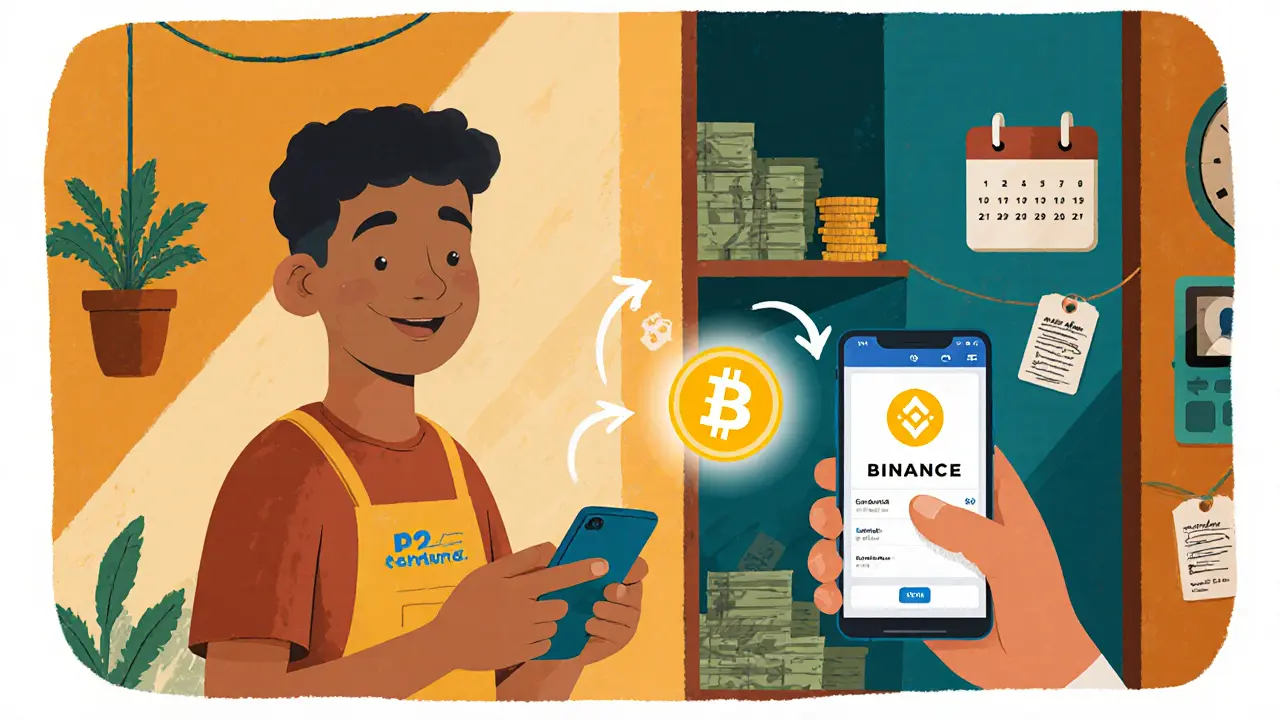
How Peer‑to‑Peer Platforms Keep the Economy Moving
The backbone of the ecosystem is Binance P2Pa peer‑to‑peer marketplace that matches buyers and sellers of crypto without a traditional bank. Binance commands about 63% of Venezuela’s P2P volume, followed by LocalBitcoinsa global P2P exchange that operates in many languages, including Spanish.
These platforms let anyone with a smartphone and a 4G connection (about 45% of the population has reliable internet, per ITU 2025 data) trade directly. The process typically involves:
- Creating a wallet on Binance or Airtm.
- Selecting a buyer/seller with a good reputation.
- Transferring fiat (often in bolívars or dollars) in exchange for crypto.
- Confirming the trade and releasing the crypto.
Because the platforms operate outside the formal banking system, they sidestep U.S. sanctions that block traditional money‑transfer routes.
Real‑World Impact: Stories from the Streets
Victor Sousa, a market vendor in Caracas, says he now accepts USDT for phone accessories. “There’s lots of places accepting it now… The plan is to one day have my savings in crypto.”
Another user, known as “CryptoSurvivorVE” on Reddit, posted: “Without USDT, I couldn’t feed my family after my bolívar salary became worthless overnight.”
These anecdotes mirror the data: a Markets.com survey of 1,200 merchants found 65% accept crypto for routine sales, and 28% of medium‑size businesses now list crypto among their payment options.
Risks, Challenges, and the Dark Side
The upside is clear, but the ecosystem is fragile. The main challenges are:
- Internet speed. Venezuela ranks 153rd globally, with average download speeds of 14.79Mbps (Ookla Q22025). Slow connections cause failed trades for 37% of users.
- Sanctions. U.S. Executive Order13850 restricts accounts linked to sanctioned individuals, blocking roughly 18% of attempted transactions on Binance.
- Centralized stablecoins. Tether controls 76% of the stablecoin market in Venezuela, exposing users to issuer risk if US regulators crack down.
- Conversion costs. Spread fees average 3.7% during high demand, cutting into already thin margins.
Academic voices warn that crypto cannot fix deeper structural problems. Professor Carlos Hernández from the University of Zulia notes, “Crypto adoption is a symptom of economic failure, not a solution.” The IMF’s David Lipton adds, “Digital assets provide tactical relief but cannot substitute for sound monetary policy.”
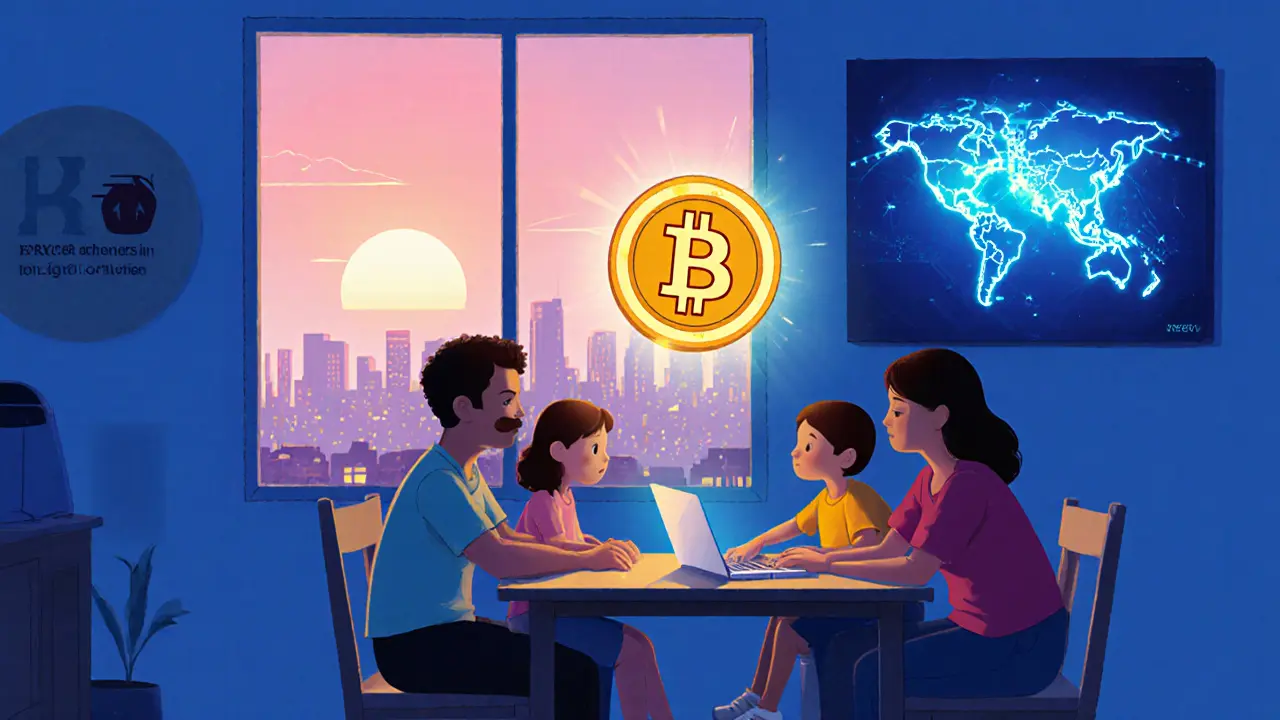
Future Outlook: From Survival Tool to Parallel System?
If inflation stays above 50% annually-an IMF projection for the next two years-crypto will remain essential. The International Monetary Fundthe global financial organization that monitors economies worldwide expects a modest devaluation slowdown only after 2027.
Potential inflection points include:
- Integration with the BRICS cross‑border payment initiative, which could reduce reliance on U.S.‑controlled networks.
- Possible regulatory clarity from the Central Bank of Venezuela, which hinted at a framework in its 2024 report but has yet to act.
- Growth of decentralized exchanges (e.g., Bisq) that might evade sanctions.
Optimists see a transition: crypto moving from a “survival mechanism” to a formal parallel payment rail that could eventually link to a stable national currency. Pessimists warn that if the bolívar stabilizes, the urgency fades and users could be left holding centralized stablecoins with limited consumer protections.
Comparison of Popular Crypto Options in Venezuela
| Metric | Bitcoin (BTC) | USDT (Tether) | Petro |
|---|---|---|---|
| Price stability | High volatility (±20% MoM) | Pegged to USD, Tether Limitedissuer controlling most USDT supply maintains ~0.5% variance | Collapsed 2024, now worthless |
| Transaction speed | 10‑60min (network congestion) | Under 2min on Tron | Not operational |
| Adoption rate (users) | ~2.1million | ~4.3million (incl. wallets) | Negligible |
| Regulatory risk | Medium (global scrutiny) | High (U.S. sanctions on issuer) | Very high (government‑backed, collapsed) |
Quick Tips for New Crypto Users in Venezuela
- Start with a Binance or Airtm wallet-both have Spanish tutorials rated 4.2/5.
- Convert small amounts of bolívar to USDT first; avoid large swaps until you’re comfortable.
- Check the seller’s rating on Binance P2P; aim for a minimum of 4.5 stars.
- Keep a backup internet hotspot; 37% of users lose connectivity during peak hours.
- Stay updated on sanctions news-blocked accounts can freeze your funds.
Frequently Asked Questions
Can I use Bitcoin to pay for groceries in Venezuela?
Yes, many merchants in Caracas and other cities accept Bitcoin, but because confirmations can take up to an hour, most prefer USDT for quicker checkout.
Why is USDT more popular than Bitcoin for daily transactions?
USDT stays pegged to the U.S. dollar, giving users price stability. In a hyperinflationary environment, that certainty outweighs Bitcoin’s store‑of‑value appeal for everyday purchases.
What are the main risks of using crypto in Venezuela?
Risks include internet outages, U.S. sanctions that can freeze accounts, reliance on centralized stablecoin issuers, and occasional high transaction fees during network spikes.
How can I convert crypto back to cash?
The most common method is to sell USDT on Binance P2P for bolívar or U.S. dollars, then withdraw cash at a local agent or use it to purchase prepaid cards.
Is the Venezuelan government planning to regulate crypto?
The 2020 Crypto Assets Law offers a vague framework, but the Central Bank of Venezuela has not issued concrete guidelines yet. Expect gradual clarification if inflation eases.
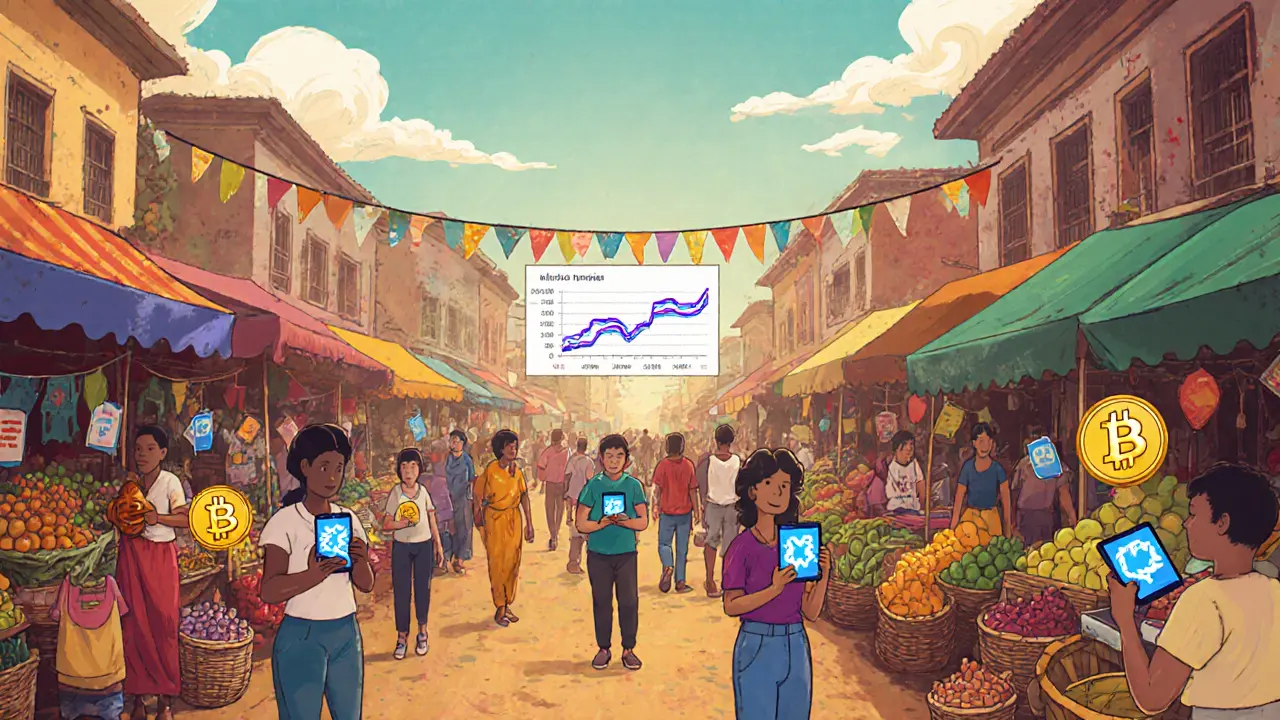
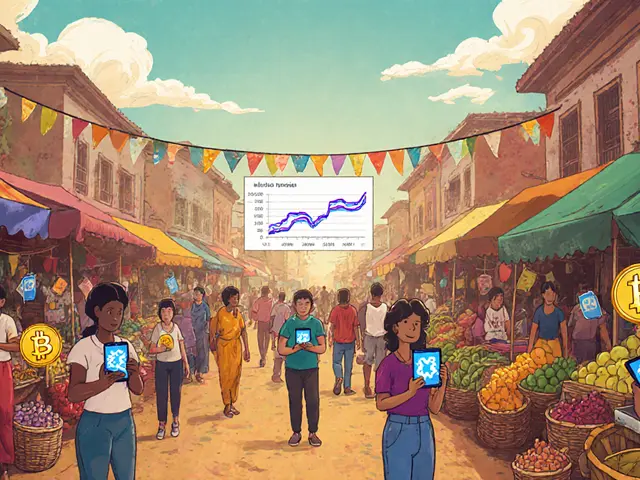
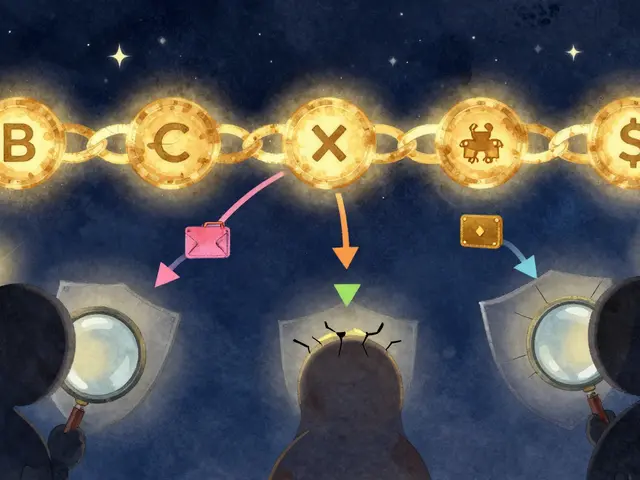

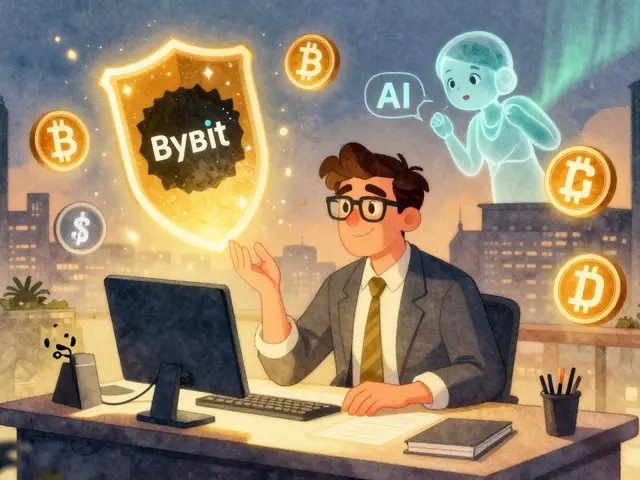
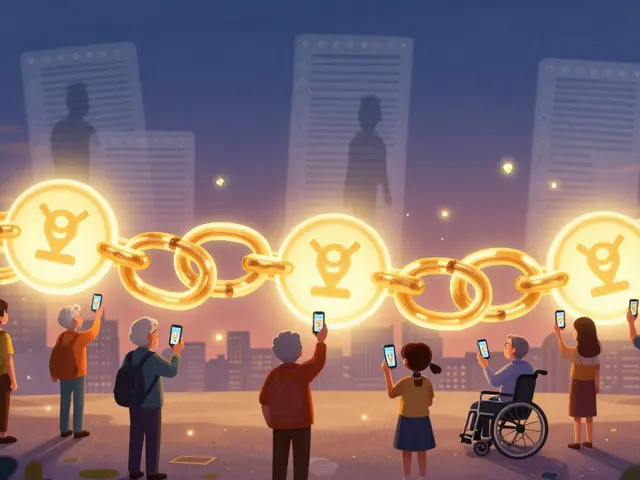

ചഞ്ചൽ അനസൂയ
September 19, 2025 AT 04:39Yo, it's wild how Bitcoin’s become a lifeline for folks in Venezuela; keep spreading the word! The resilience of people there is seriously inspiring.
Orlando Lucas
September 26, 2025 AT 03:19When you look at hyperinflation, it forces a rethinking of what we call "money". Bitcoin offers a decentralized hedge that isn't tied to any single government's policy. Still, it’s a gamble, but one many are willing to take.
Philip Smart
October 3, 2025 AT 01:59Sure, but the volatility makes it a risky daily tool.
Jacob Moore
October 10, 2025 AT 00:39Honestly, seeing crypto adoption in crisis zones gives me hope. It shows tech can level the playing field, even if the rollout is rocky.
Manas Patil
October 16, 2025 AT 23:19From a cultural lens, the Venezuelan diaspora has been pushing Bitcoin as a bridge to the global economy. The network effect is growing, and merchants are slowly hopping on. This creates an ecosystem where remittances flow smoother. Meanwhile, local entrepreneurs are crafting services around crypto.
Annie McCullough
October 23, 2025 AT 21:59Bitcoin’s hype is just a bubble 😏
Lady Celeste
October 30, 2025 AT 20:39While the hype may be loud, the actual utility on the ground is minimal. People still struggle with internet access.
Ethan Chambers
November 6, 2025 AT 19:19One could argue that fiat is just as unstable, yet we cling to it. The narrative around crypto is overly romanticized.
gayle Smith
November 13, 2025 AT 17:59Y’all think this is a fad, but the on‑ground adoption stats are spiking. Every day, more street vendors accept satoshis. It’s a grassroots revolution, not a market hype.
mark noopa
November 20, 2025 AT 16:39Bitcoin's entry into Venezuela is a case study in how decentralized finance can bypass broken state mechanisms.
Hyperinflation erodes the purchasing power of the bolívar at an astronomical rate, forcing citizens to search for alternatives.
Cryptocurrencies, especially Bitcoin, provide a store of value that is not directly manipulable by Caracas.
The process of buying Bitcoin with local currency, however, often involves navigating a labyrinth of exchanges with varying fees.
Despite the complexity, many Venezuelans report that a single Bitcoin can preserve years of income, a stark contrast to a salary that loses half its value each month.
Stablecoins like USDT offer transactional stability for day‑to‑day purchases, yet they introduce custodial risk and reliance on foreign issuers.
The interplay between Bitcoin as a long‑term hedge and USDT as a short‑term medium creates a dual‑strategy that many adopt.
Community groups have sprung up to educate users about wallet security, private key management, and basic blockchain literacy.
These grassroots educational efforts are crucial because a single mistake can lead to irreversible loss of funds.
Moreover, the adoption of Bitcoin has spurred ancillary services, such as crypto‑friendly remittance providers and local exchanges that accept cash.
These services help bridge the gap between the formal financial system and the informal cash‑based economy that dominates Venezuela.
Critics point out the high energy consumption of Bitcoin mining, but most Venezuelan miners are tapping into pre‑existing hydroelectric infrastructure.
Some argue that this creates environmental concerns, yet the alternative-reliance on a bleeding‑edge fiat-offers no real sustainability.
In the grand scheme, Bitcoin's role in Venezuela illustrates how technology can empower individuals in the face of systemic failure.
While it is not a panacea, it provides a resilient alternative that many are turning to for financial survival.
Rama Julianto
November 27, 2025 AT 15:19That’s a solid overview. Just remember, securing private keys is paramount-once lost, those hard‑earned BTC are gone for good.
Helen Fitzgerald
December 4, 2025 AT 13:59Great points! If more NGOs could fund crypto‑education, the impact would multiply.
Jon Asher
December 11, 2025 AT 12:39I think any tool that helps people survive is worth considering.